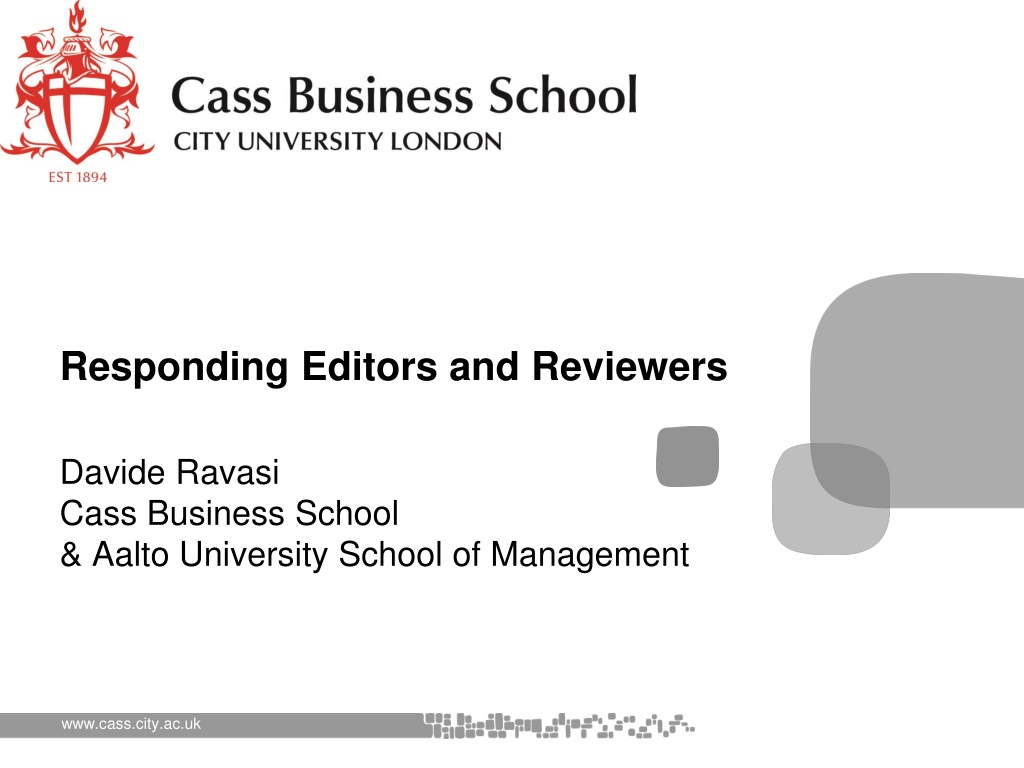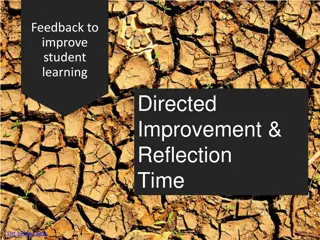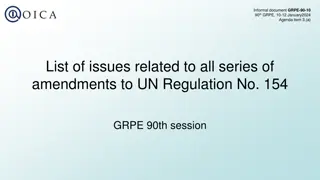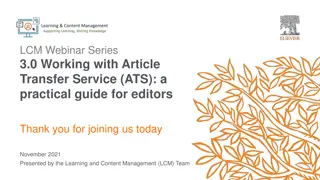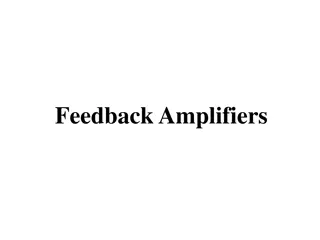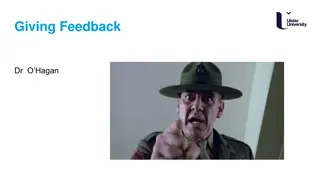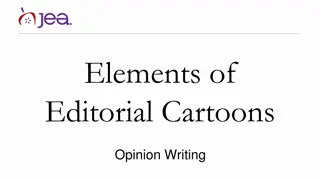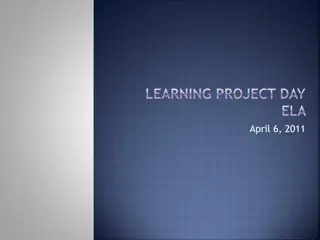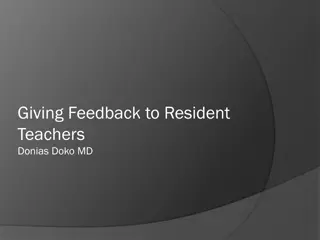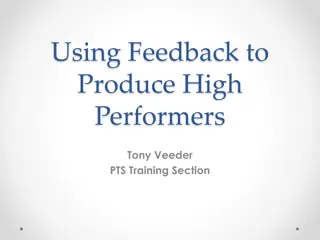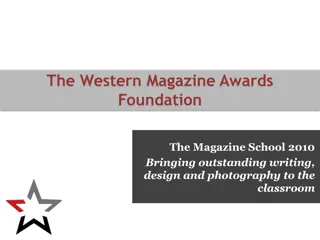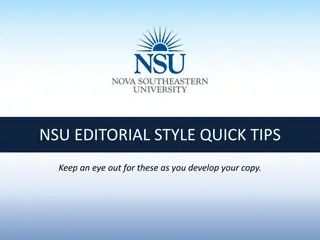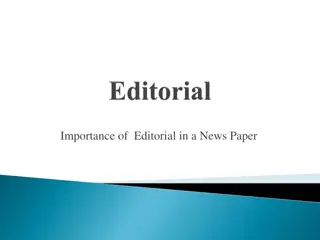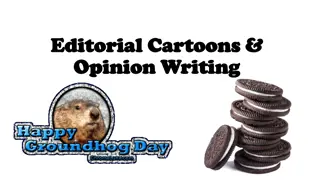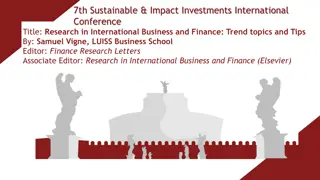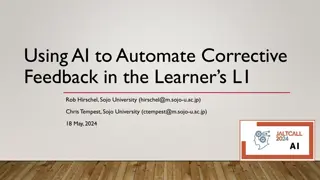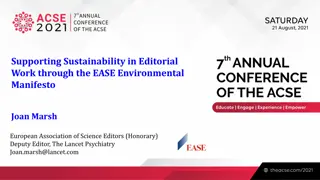Effective Strategies for Responding to Editorial Feedback in Academic Publishing
Learn valuable tips on handling revise and resubmit requests, analyzing reviewer comments, preparing response letters, and structuring your responses effectively to enhance your chances of publication success in academic writing.
Download Presentation

Please find below an Image/Link to download the presentation.
The content on the website is provided AS IS for your information and personal use only. It may not be sold, licensed, or shared on other websites without obtaining consent from the author. Download presentation by click this link. If you encounter any issues during the download, it is possible that the publisher has removed the file from their server.
E N D
Presentation Transcript
Responding Editors and Reviewers Davide Ravasi Cass Business School & Aalto University School of Management www.cass.city.ac.uk
What to do when you get a revise and resubmit (Schminke) Don t take it personally (it s not) Be proactive (many never revise) Be prompt (while fresh in reviewer minds) Be problem-solving (disagreement is ok) Learn, even from rejections Be happy: It s good news! www.cass.city.ac.uk
What do I do when I get an R&R? I try to get the general tone (how positive/negative are they really? What is really bugging them?) I analyze comments one by one (how critical are they? How can we respond? I take detailed notes) If they did not seem to get it, I try to figure out, what we did wrong I try to figure out who the reviewers may be, or at least their theoretical perspective I prepare a draft of the letter, outlining the concerns of reviewers and editors I start revising, and work in parallel www.cass.city.ac.uk
The structure and content of response letters There are many possible formats. Whichever you choose, make sure you: Summarize your understanding of the main issues and how you addressed them Address explicitly ALL the editor s concern (eventually you have to please HER/HIM!) and, possibly, also the reviewers Help the editor and the reviewers understand how you addressed the issues they raised: Summarize the content of changes Connect changes to comments www.cass.city.ac.uk
The structure of the response letter: Editor only, with general references www.cass.city.ac.uk
The structure of the response letter: Editor only, with detailed references www.cass.city.ac.uk
The structure of the response letter: Tabular format www.cass.city.ac.uk
The structure of the response letter: Cut- and-paste of the whole original www.cass.city.ac.uk
The structure of the response letter: Point-by-point summary and reply www.cass.city.ac.uk
Responding Reviewers www.cass.city.ac.uk
Be appreciative (and really MEAN it!) Acknowledge and appreciate reviewers suggestions and contribution (after all, they spent a day or two on your paper ): Thank you for your comments and your suggestions. They were very important because they reassured us about the strength of our dataset, but they alerted us to the insufficient job we did in analyzing it in depth and in adequately framing it. They drove the reframing of the paper (from material artifacts to material practices) and pushed us to sharpen our thinking (to better outline what makes material artifacts different from discursive ones) towards a more significant contribution. www.cass.city.ac.uk
Be honest If you have been unclear or ambiguous, admit it (and apologize): Example 1: We recognize that the opening paragraph of our previous version awkwardly misrepresented the debate going on in the field (and indeed our interpretation of it). The revised theory section hopefully provides a more nuanced account of the different positions in the field. Example 2: Some of your comments seem to rest on the assumption that several directors in the boards we observed were in fact internal directors from the managerial ranks of the company. We realize now that ambiguity in the way we described the professional background of board members in Table 2 might have given that false impression. We apologize for what might have seriously affected the way you read and evaluated our findings. www.cass.city.ac.uk
Be confident (and convincing) You do not have to agree - but if you disagree, make sure to make a convincing point! If we consider the whole story of B&O, it is likely that, to some extent, the different interpretations you tentatively propose (gradual drift, resistance to change, etc.) may apply to different stages. We believe, however, that beneath the specific features of the three events we described, we can trace similar dynamics highlighting interrelations between image, identity and culture in organizations. The relevance of the study, therefore, may rest primarily on the insights that it generates in relatively underexplored areas such as the relationships between organizational identity and culture ( ) www.cass.city.ac.uk
Bring it back to the data Back up disagreement with reference to the data ( in theory, yes; in practice, no ): Example 1: We agree with Reviewer 1 that even discursive artifacts may possess the properties of separateness that we ascribed to material artifacts in the previous version of our manuscript. Our informants, however, consistently reported how the physicality of artifacts altered the quality of their engagement with the ideas they embodied, compared to simple verbal utterance or conversation. Example 2: Some informants did mention how the severe cost-cutting associated with Six Sigma was initially justified by the expected economic decline, and how these cuts were expected to streamline the organization so that, by the time the economy would start growing again, 3M would be in better conditions to take advantage of it. Our informants, however, also mentioned how eventually this did not happen. But rather than referring to the incapacity of Six Sigma to capture opportunities associated with the changed macro-economic landscape, they mentioned how lagging performance measures were inconsistent with the traditional goals of the organization: growth and innovation. www.cass.city.ac.uk
Connect to broader theoretical conversations Remind about widely accepted conceptualizations With the exception of extreme functionalist or postmodernist positions (see Whetten & Godfrey, 1998), most identity scholars tend to define organizational identity as a relatively stable set of attributes that members consider core and distinctive about their organization. Scholars, then, seem to conceive organizational identity as what members agree that identity is , be it embodied in formal statements ( la Whetten) or in tacit understandings ( la Gioia). If we subscribe to this position, the fact that statements such as the Seven Corporate Identity Components, the New Vision or the Fundamental Values were the result of a deliberate attempt to define the identity or the essence of the organization, and were explicitly used to illustrate the identity of the company internally and externally seems to provide a solid support to the claim that these organizational self-definitions were indeed identity claims . www.cass.city.ac.uk
Connect to broader theoretical conversations Remind about the current state of the debate Following your suggestion, we have simplified our theoretical background and now use a more classic definition of culture focused on shared values and assumptions (Schein, 1984, 2010). At the same time, in order to be true to the debate taking place in the field of organizational culture, in the discussion section we acknowledge the recent rise of an alternative perspective on culture- as-repertoire. However, contrary to the customary way in which these two perspectives are presented by organizational scholars, we do believe that they are not entirely incompatible. www.cass.city.ac.uk
Connect to broader theoretical conversations Remind reviewers about the existence of diverging but equally legitimate theoretical perspectives: Your comments point to a large body of research rooted in organizational behaviour, using large scale quantitative methods, to investigate the influence of individually-held cultural values. Our study, instead, was informed by an equally fortunate stream of research rooted in organizational sociology, using qualitative methods to investigate culture as a set of knowledge structures that members use to make sense of their organizational reality. We believe that many of the reservations you express about our definition of culture and about the appropriate way of studying it are largely due to the different paradigmatic conventions that these two traditions accept. Your comments, however, pushed us to reflect more deeply on the ontological and epistemological assumptions guiding our study, and to make an additional effort to clarify these assumptions. We are grateful for this encouragement, as we really believe that it helped us to produce sharper and hopefully more convincing arguments. www.cass.city.ac.uk
Be transparent and comprehensive Give reviewers extra treats additional tables, analyses, discussions, etc. not included in the manuscript that give them extraordinary insight into the methodology. In order to properly address your concern, we have carefully reconstructed the 50 decision making processes. They are summarized in Appendix B of this letter. We have identified different patterns (surgeon-driven vs. manager driven), and tracked the relative diffusion of each pattern over time. For the sake of space saving, in the revised paper we have not presented detailed results, but we mention the relative prevalence of either patterns as we describe the diffusion of new technology over time. www.cass.city.ac.uk
Take them seriously Explore all the literature they refer to and try to find a way to USE the literture they suggest. Do not just cite it! Thank you for indicating possible alternative explanations and relevant literature that we might have overlooked. We have carefully reviewed past work on translation, and reflected on its relevance to our observations, and incorporated some of these notions in our revised interpretation. Institutional theorists have begun to investigate how ideas are translated as they travel across nations, and industries. In this respect, our focus on intra-field (rather than inter-field) diffusion seems to fall out of the scope of this theory. However, we found two insights from this literature important as we took a fresh look at our data in light of your observations... www.cass.city.ac.uk
Take them REALLY seriously Show how their comments pushed you to collect extra data, question your interpretations, apply other analytical methods You are so right. We were simply so busy collecting data about adopters that it did not occur to us to extend our analysis to non-adopters. In order to correct this shortcoming, in the past few months we have contacted a sample of non-adopters to investigate the reasons why they have decided not to adopt the robot (or not yet). Show them how you REALLY consider the alternative viewpoints they provided In order to address your rightful concern for possible alternative explanations, we used archival data to compare adopters and non-adopters, along core variables, such as size and affiliation with medical school. We have now included a table (Table 2) that summarizes the main features of adopters While these variables certainly contribute to explain what we observed, sole emphasis on size and affiliation with medical school may present a partial and possibly misleading portrayal of the process. www.cass.city.ac.uk
Help them see the gemstone Emphasize reviewers appreciation. Remind the editor and the other reviewers of the good things they saw in your paper Reading that you found our findings novel, useful and important reassured us about our direction, and made us work with renewed enthusiasm on the revised version of the manuscript! Establish terms of reference for the evaluation of your manuscript Generally speaking, we agree with you that observing that in presence of highly divergence interests it is more likely that board members will engage in political behaviour does not strike one as particularly innovative. However, most research on board of directors has in fact overlooked the political activity carried out within boards. In this respect, we believe that the merit and contribution of our study should be evaluated also with respect to its contribution to the extant literature on board of directors and to widely held assumptions in the field about the functions of the board and the antecedents of its involvement (summarized in Table VIII). www.cass.city.ac.uk
Highlight your contribution Agency Strategic Choice Resource Political Dependence Central issue Divergence of interests between managers and shareholders (Fama and Jensen, 1983) Adaptation to environmental changes (Andrews, 1980) Acquisition of critical resources (Pfeffer and Salancik, 1978) Reconcilement of multiple interests represented in the board (Hickson, 1987) Contribution of outside directors Support for risk- seeking, profit- oriented strategies Imported knowledge Connection with critical resource- holders Representation and safeguard of outside interests Contribution of inside directors Support for risk- averse, conservative strategies Firm specific knowledge Cooptation of influential members of the community Mediation between the firms and represented parties Primary function of the board Monitoring. Advice. Environmental Consensus building. Primary antecedents of board involvement Board composition (Baysinger et al., 1991) and CEO duality (Zajac and Westphal, 1996) Institutional pressures (Hillmann, Cannella and Paetzold, 2000) Heterogeneity of represented interests Existence of conflict regulation mechanisms Board members knowledge (Carpenter and Westphal, 2001) www.cass.city.ac.uk
Remind about the context Remind reviewers of the boundaries of your work (purpose of the paper, scope of the study, available space, etc.): Example 1: Providing a rich account of [conversational] practices, however, was not easy, considering the page limit of the article. Also sensemaking research has already widely studied conversational practices. ... Coherently with the original purpose of our study, then, we eventually decided to focus on the less explored practices that materially mediate conversation, because this topic seem to offer the possibility to provide a more novel and significant contribution. Example 2: Thank you for the suggestion. We absolutely agree on the importance of reducing the length of our paper. Despite our efforts, we regret that the need to properly introduce the domain of our paper, summarize prior research, frame our research question as suggested, convincingly argue for its importance, and effectively summarize insights from our study did not allow us to substantially shortening our introduction. We certainly welcome additional suggestions about parts of the introduction that appear redundant or superfluous. www.cass.city.ac.uk
Remind about the context Remind reviewers that your method should be assessed in its own terms: In socio-anthropological research on organizational culture, using scales to measure culture is regarded negatively and discouraged in favour of more open, qualitative methods that allow researchers to capture the specificities of organizational cultures as understood by informants. Attempts to measure culture in quantitative terms may be accused of naively reifying the concept of culture that is for treating culture as a thing that could be accurately known and objectively measured (Martin, 2002, p. 31). We do not agree with these extreme positions, and we do recognize the value of quantitative investigations of individually-held cultural values. Our methodological choices, however, were coherent with the conventions of the scholarly community we intended our study to address, and more importantly with the conceptualization of culture driving our investigation. www.cass.city.ac.uk
Remind reviewers that they are not alone Explicitly refer to other reviewers comments (especially if conflicting suggestions are made) I was confused by your claim (which is not sourced with references) that current understandings of sensemaking posit that interpretation occurs as the abstract (a pre-existing mental structure) is linked to a material stimulus (a cue) Sensemaking involves the collapse of cognition and action, such that individuals act their way into understanding. Thus individuals experiences, and how they probe those experiences with concepts such as experimentation and improvisation, play a crucial role in informing interpretations. We truly apologize for the missing reference in this text (possibly lost in one of the last rounds of streamlining of the previous version) and for the confusion that it might have generated. The fact that Reviewer 2 (C. 9) considered the very same sentence as embodying a major contribution of our paper clearly flagged this sentence as in need of special attention. www.cass.city.ac.uk
Involve the editor For controversial issues, leave options open to the editor or the reviewers Given the length of the paper, we have tentatively eliminated table 4 because its content is now distributed in the other four tables. If you think that a summary table is needed, we can easily reintroduce it. When in doubt, ask the editor We agree with your comment about the unusual length and complexity of our paper, and we seriously considered splitting the paper in two as you suggested In doubt, however, we took the liberty to consult the Editor on such a fundamental issue. Following his advice, we decided to retain both parts of the story. www.cass.city.ac.uk
Some final wise words Remove anything that is not needed to support your arguments, but may confuse reviewers Don t be emotionally attached to some parts or some concepts; if they don t work, let them go Do not say anything that can be used against you If it is not broken, don t fix it! www.cass.city.ac.uk
The etiquette of revisions Do not send the same paper to two journals at the same time Acknowledge receipt of the letter If you are rejected, do not send the exact same paper to another journal; revise it anyway If you are not planning to revise your paper, let the editor know If you are late, let the editor know www.cass.city.ac.uk
